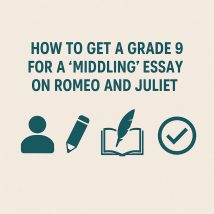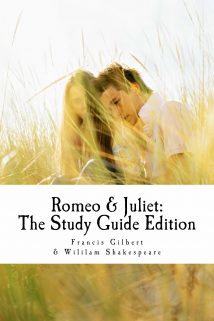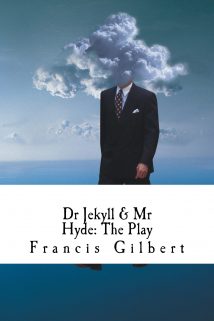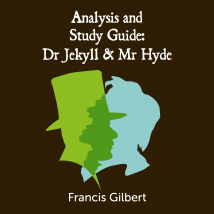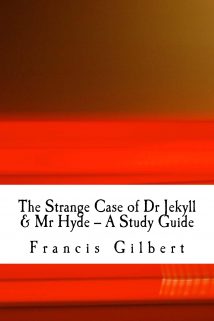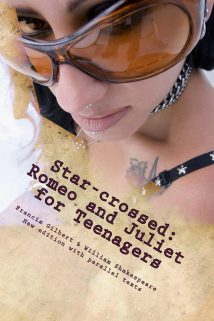Titles
books, plays, poems, tv programmes, films, documentaries… subject source material for posts aimed at students and teachers
-
🏅Model GCSE Essay on the Feud in Romeo and Juliet
If you’re teaching or studying Shakespeare’s ‘Romeo and Juliet’, you’ll know that essays about the family feud often hover around a Grade 4, 5 or 6—what examiners might call ‘middling’ or ‘competent’ responses. But with a few targeted improvements, these essays can be transformed into top-grade responses. I’ve updated one of my most popular blog posts to show exactly how to do this, paragraph by paragraph, with comments, grade 9 tips, and clear marking guidance for teachers and pupils alike. The key is to move beyond surface-level understanding and begin thinking like a literary analyst. That means really digging into Shakespeare’s language (AO2), showing a secure knowledge of the play and its themes (AO1), and crucially, thinking about why Shakespeare wrote what he did, and how his audience might have reacted (AO3). This is where the 5Ws strategy—Who, What, Where, When, Why—comes in. For example, instead of simply quoting the Prologue’s “ancient grudge” to describe the feud, a top-grade response will explore the word “ancient” in more depth. What does it suggest about tradition, time, and decay? What kind of audience would Shakespeare have been writing for, and why might he start with such a phrase? A Grade 9 student doesn’t just spot a quote—they zoom in on the language, explain the technique being used, and link it to Shakespeare’s bigger message about love, hate, and fate. I’ve used a visual symbol system in the new version of this post to make each part of the answer easier to teach and understand. A pencil icon stands for thoughtful analysis, a book and quill symbol represents literary and historical context, and a checkmark indicates where a pupil is showing Grade 8–9 thinking. I’ve also added a quiet but clear visual: a student figure at the centre of the learning, reminding us this is about developing real, mindful confidence—not just ticking boxes. This new breakdown works well for teachers modelling essays in class, for pupils revising independently, and for tutors looking for a clear teaching sequence. And if you’re looking for more structured support, I’d recommend my edition of the play, Romeo and Juliet: The Complete Play with Integrated Study Notes and Smart Translation—ideal for exploring language, structure and context in one place. For teachers, The Mindful English Teacher includes ideas for making literary analysis more inclusive, reflective, and emotionally aware. You can view the updated post and download the image resources now at francisgilbert.co.uk, or find the essay thread pinned to my socials. Let me know how you use it, and feel free to tag me with examples of Grade 9 insights from your own pupils!
-
Romeo and Juliet: The Study Guide Edition
Written by a teacher who has taught the text for more than twenty years in various secondary schools, this version is aimed at students who must analyse the text in depth or teachers wanting to deliver outstanding lessons on it. The book contains the complete text together with a parallel modern translation, which most students will be able to read independently or in small groups: the language is entirely appropriate for ages 11-18 years.
-
Dr Jekyll & Mr Hyde: The Play
This compelling play is a dramatic adaptation of Robert Louis Stevenson’s novel, “The Strange Case of Dr Jekyll & Mr Hyde”, bringing out the full horror of the original story. This is the only stage version which is genuinely faithful to the text, using Stevenson’s words where appropriate.
-
Analysis and Study Guide: Dr Jekyll & Mr Hyde
This brilliant edition of Stevenson’s novel may be the answer to your prayers. Written by an experienced teacher and best-selling author, this version is aimed at students who must analyse the text in depth or teachers wanting to deliver outstanding lessons on it.
-
The Strange Case of Dr Jekyll and Mr Hyde — A Study Guide
The study guide focuses upon the text of the book, providing generous quotations from the text itself, followed by detailed analysis written in the formal academic style expected in coursework and examinations. An excellent way of revising the book would be to read through the second half of this study guide, absorbing the key quotes, reading the analysis, and answering the discussion point questions either in your head or on paper.
-
Star-crossed: Romeo and Juliet for Teenagers
A modern version of Romeo and Juliet which updates Shakespeare’s classic play in a very entertaining fashion. This play-script is not suitable for children under the age of fifteen.
-
Good links for Wilfred Owen’s poetry
http://www.bbc.co.uk/history/worldwars/wwone/wilfred_owen_gallery.shtml http://www.bbc.co.uk/shropshire/content/articles/2005/03/16/wilfred_owen.shtml
-
My YouTube videos which explain Wilfred Owen’s Exposure and Spring Offensive
A blog post containing various videos I made some time ago explaining Wilfred Owen’s poem ‘Exposure’ to my pupils in secondary school, studying it for GCSE.
-
Wilfred Owen’s poetry — a Prezi with links to YouTube explanations of the poems
Wilfred Owen’s poetry and life on Prezi
-
How did Edinburgh influence the writing of Dr Jekyll and Mr Hyde?
I think I’m getting a bit better at making these videos now. I produced this video for my GCSE pupils who have not been to Edinburgh but really need to know how the city influenced the writing of Dr Jekyll and Mr Hyde for their English Literature exam. Robert Louis Stevenson had a love-hate relationship with […]
-
The Opening of the Novel — True or false questions, analysing the opening
True or false? Gabriel Oak complains about Bathsheba’s vanity in the first chapter. Gabriel Oak is a shepherd NOT a farmer at the beginning of the novel. Oak rescues Bathsheba from dying of suffocation in his hut. Bathsheba doesn’t want to marry Oak because she does not love him. Oak would have been financially […]
-
How successfully does Hardy open Far From The Madding Crowd?
Learning Objectives To learn about the techniques Hardy uses to create a suspenseful opening to Far From The Madding Crowd To learn about the contexts of Hardy’s novel An important point Starter activity: put these elements of the opening in the correct order Gabriel Oak loses his sheep Oak is rescued from suffocation in his […]
-
Complications leads to a crisis, chapters 24-43, attraction
Learning Objective: To explore the concept of attraction and explore what it is… What makes a person attractive? Rank these qualities and add your own, with the most important first Good looks? A kind and generous personality? A dangerous and risk-taking personality? A high-status, respectable profession such as lawyer/celebrity A dangerous, romantic profession such as […]
-
Far From The Madding Crowd – complications, chapters 13-26
Learning objectives: to learn how Hardy develops complications in Far From The Madding Crowd Hardy takes some time to ‘open’ the novel – justify your answers Why is this? Because he was a writing in serial form and therefore needed to put cliffhangers in his opening which meant it was longer than most modern openings. […]
-
Far From The Madding Crowd — CHARACTERISATIONS
Learning objectives To learn how to answer exam questions To learn about CHARACTERISATIONS as opposed to CHARACTERS Important definition – COPY THIS, LEARN IT! CHARACTERISATION is how and why an author presents a character in the way he does. CHARACTER is a person in a novel WHY does more sophisticated analysis discuss CHARACTERISATIONS as opposed […]
-
Betrayal — Chapters 27-46
What is betrayal? What’s your definition of it? Situations – what would you do? You learn that your partner is havinng an affair You learn after you have committed to each other that you partner had an important relationship they haven’t told you about You learn your partner has a secret love child An attractive […]
-
Complications — The intrusion of Serjeant Troy
Complications – The Intrusion of Serjeant Troy Revision of Chapters 1 – 24 Who did what? STARTER ACTIVITY Caused a stir in the Casterbridge Corn Exchange and set the farmers’ pulses racing. Lost his sheep, became a tramp and then got a job as a shepherd. Missed a wedding because of going to […]
-
Teacher’s comments on two Romeo and Juliet essays on hatred
Important note TEACHER COMMENTS ARE IN CAPITALS. Pupils’ work are in lower case. Essay 1 ‘This play is as much about hate, as it is about love.’ Analyse how the theme of hatred is explored in Shakespeare’s play, discussing how it is represented in the language of the play and could […]
-
‘This play is as much about hate, as it is about love.’
Analyse how the theme of hatred is explored in Shakespeare’s play, discussing how it is represented in the language of the play and could be presented dramatically. Hate plays a pivotal role in the play. The long feud between the families (‘from ancient grudge’) and when individuals fight like Tybalt and Mercutio (‘Tybalt, you […]

